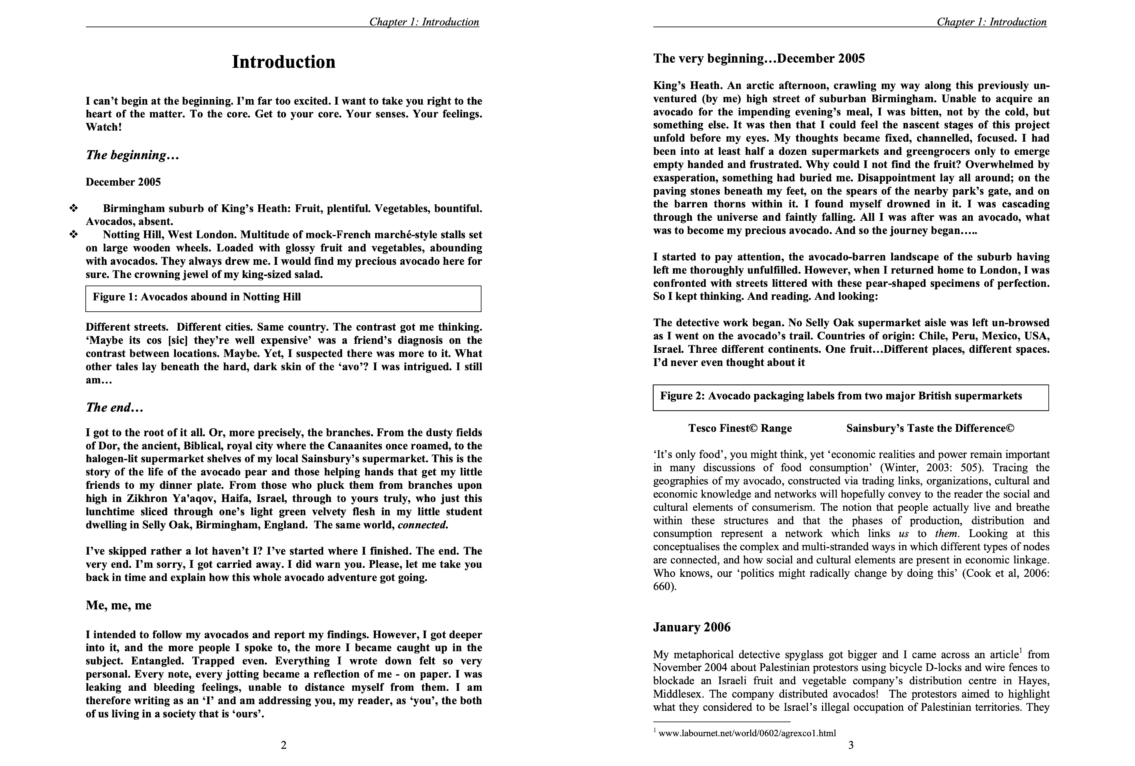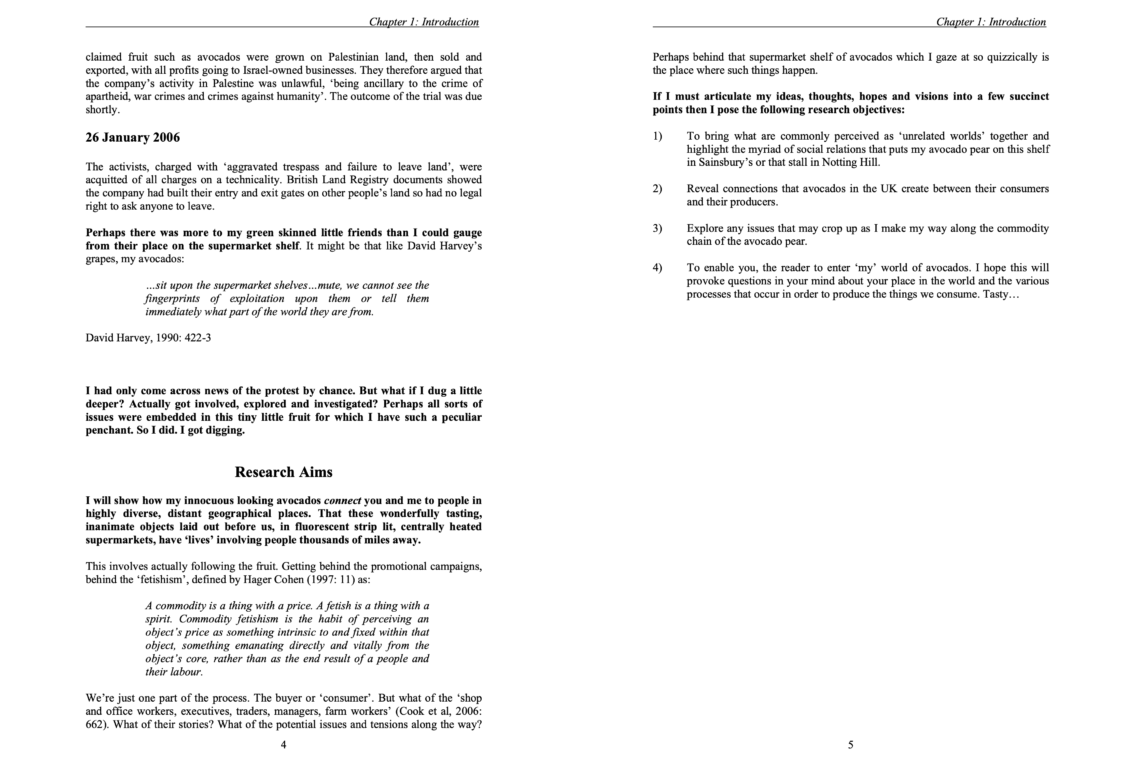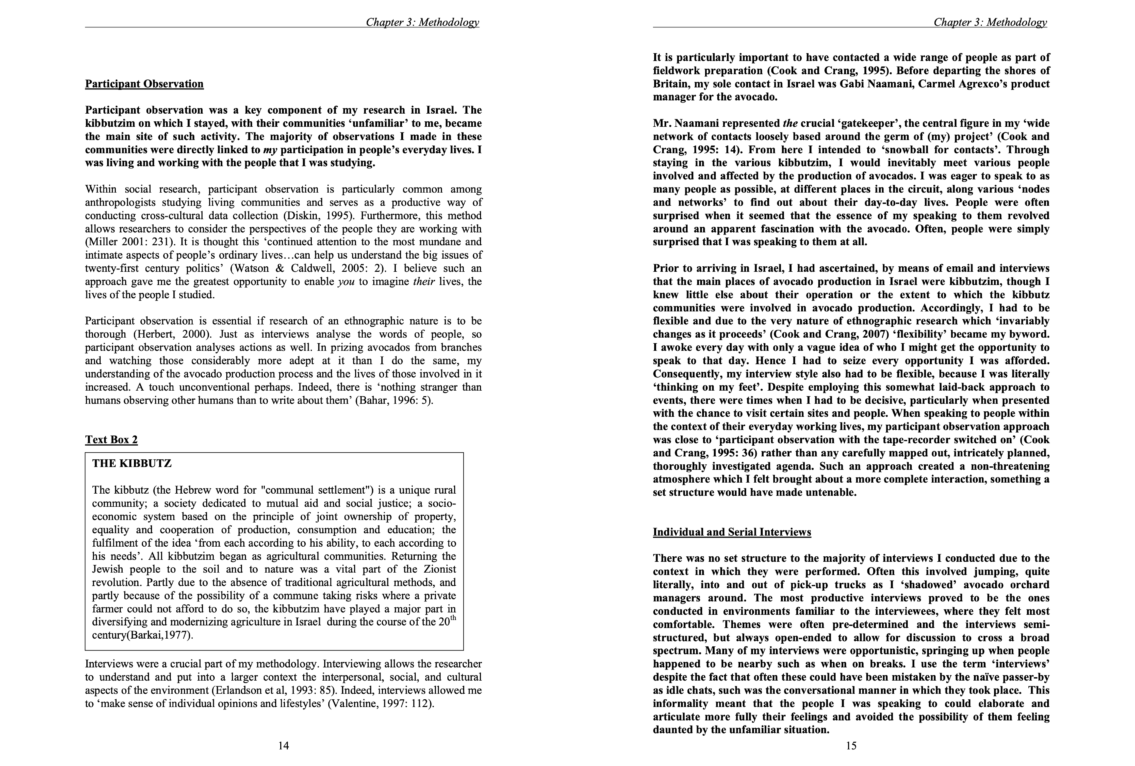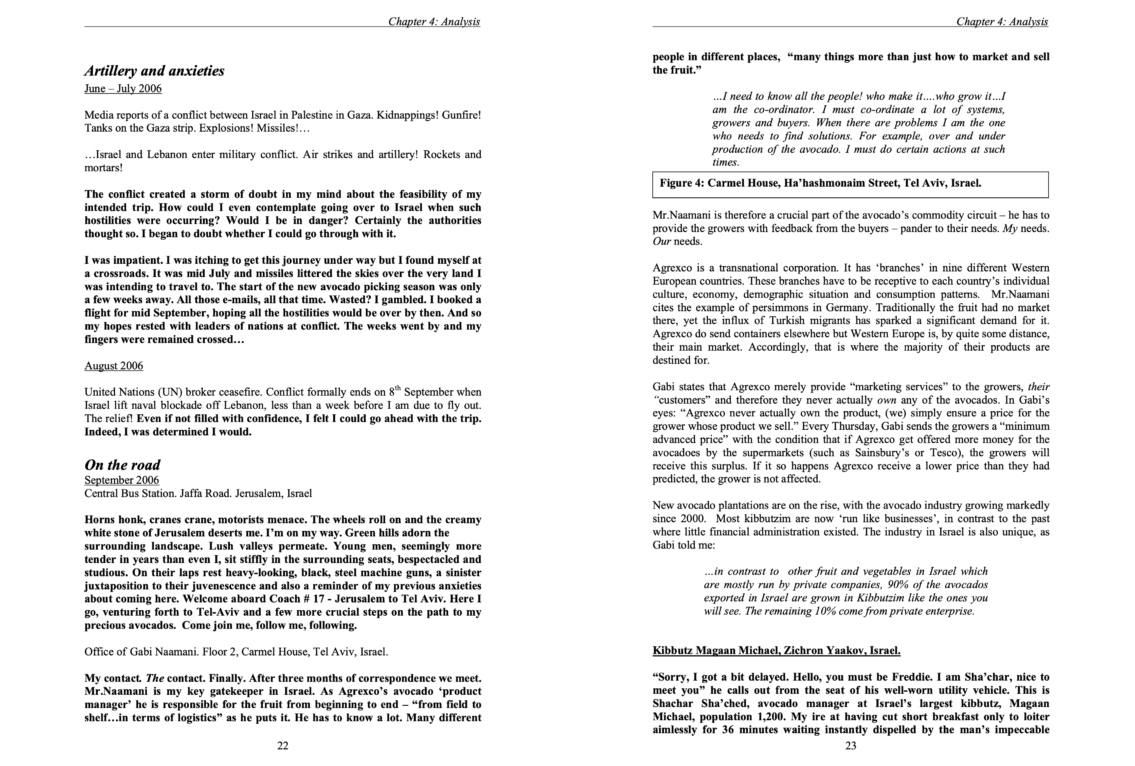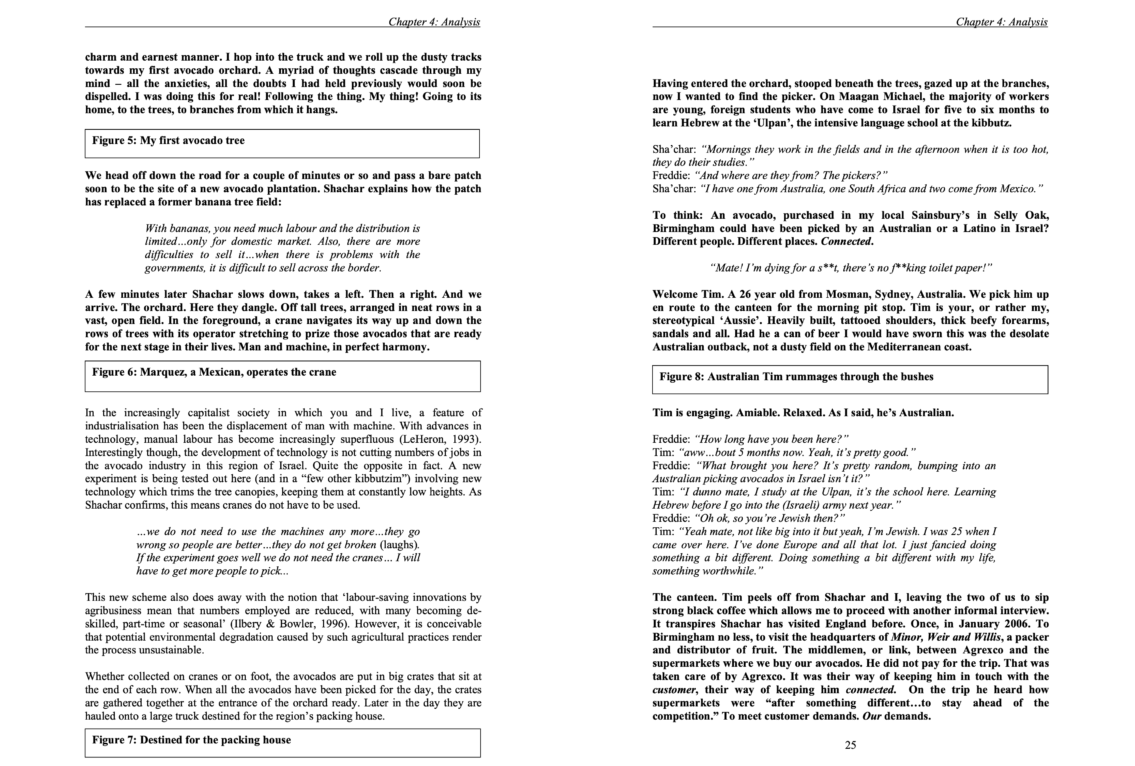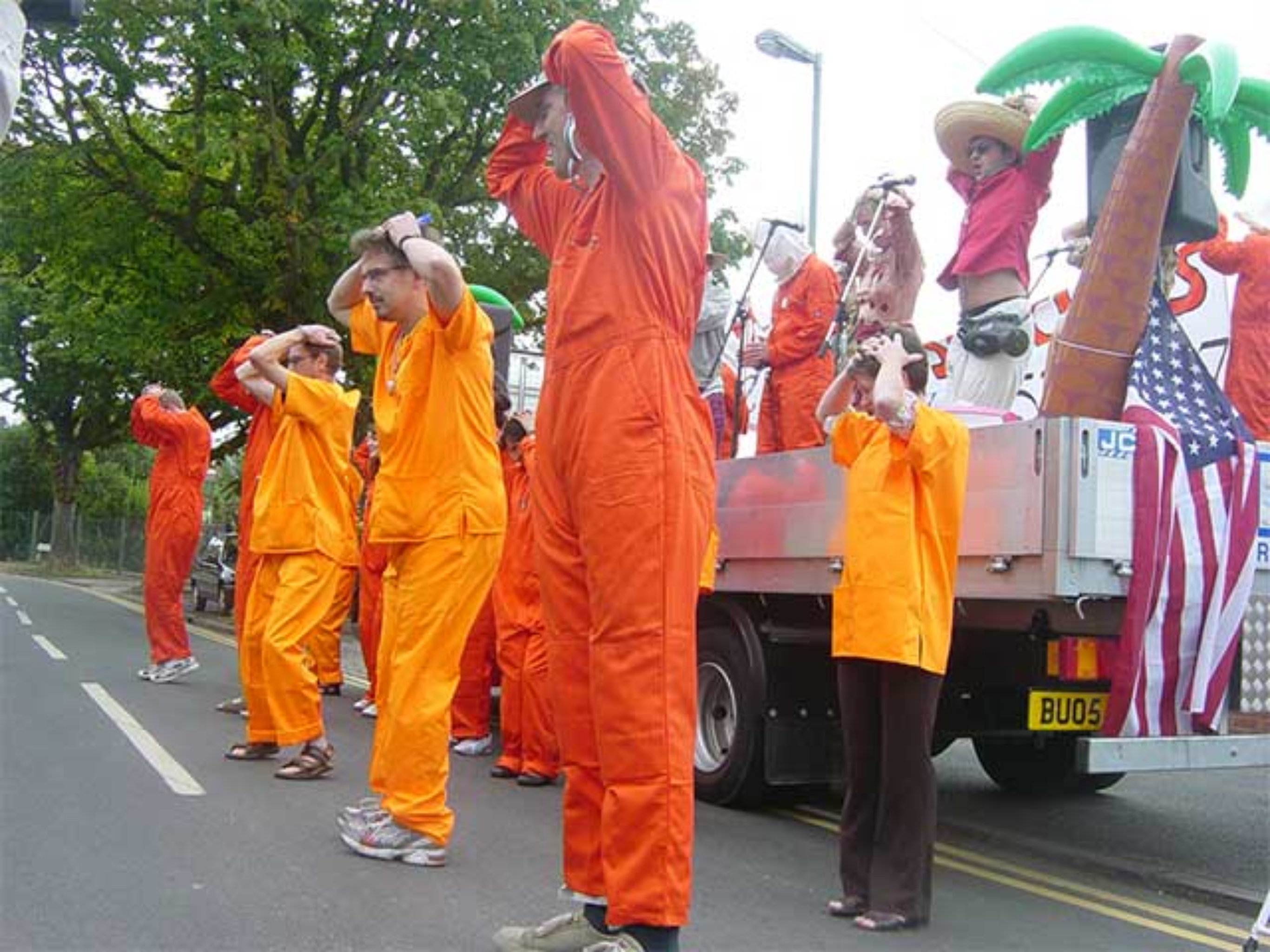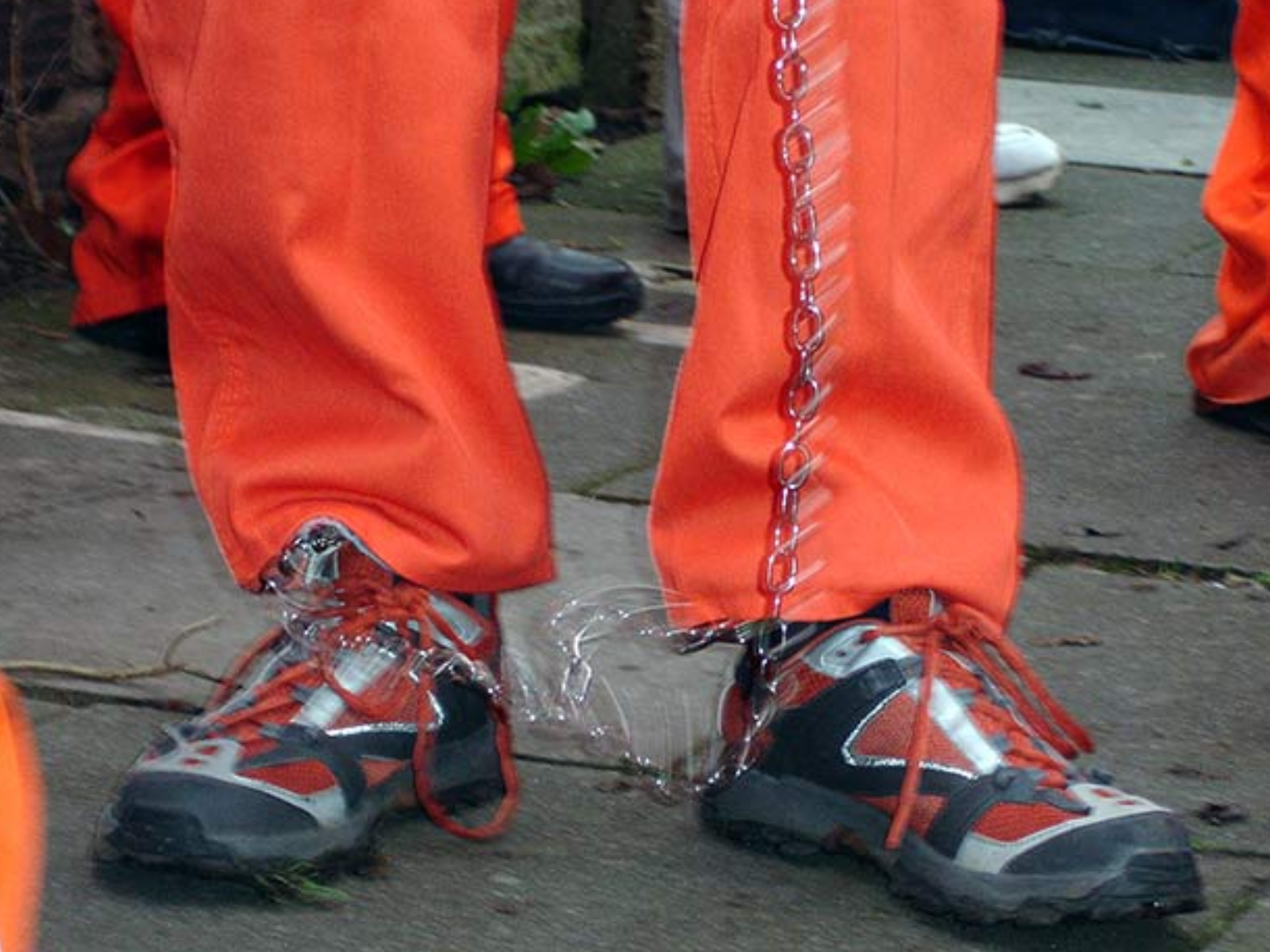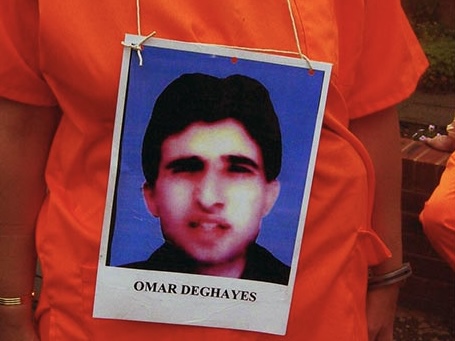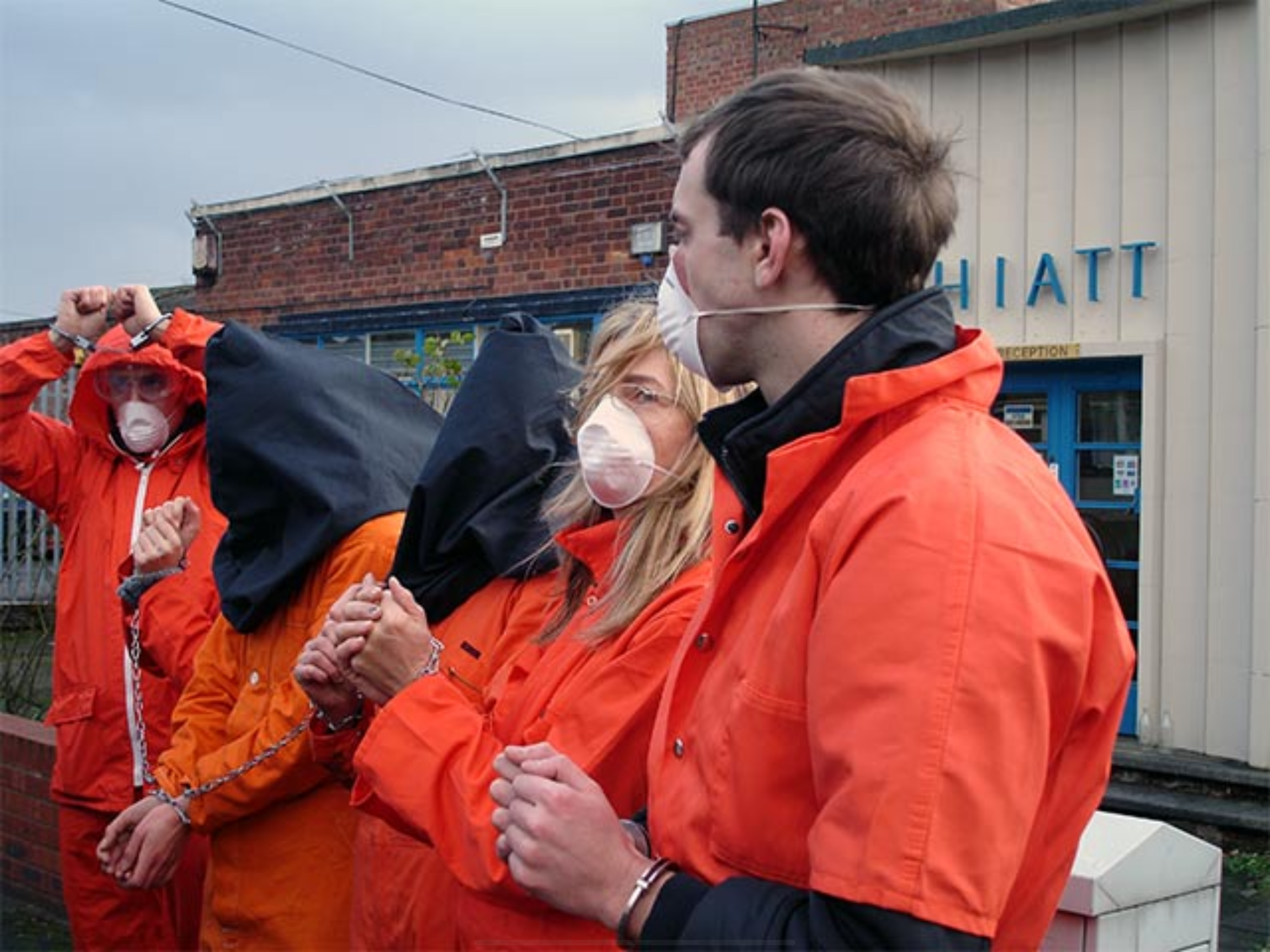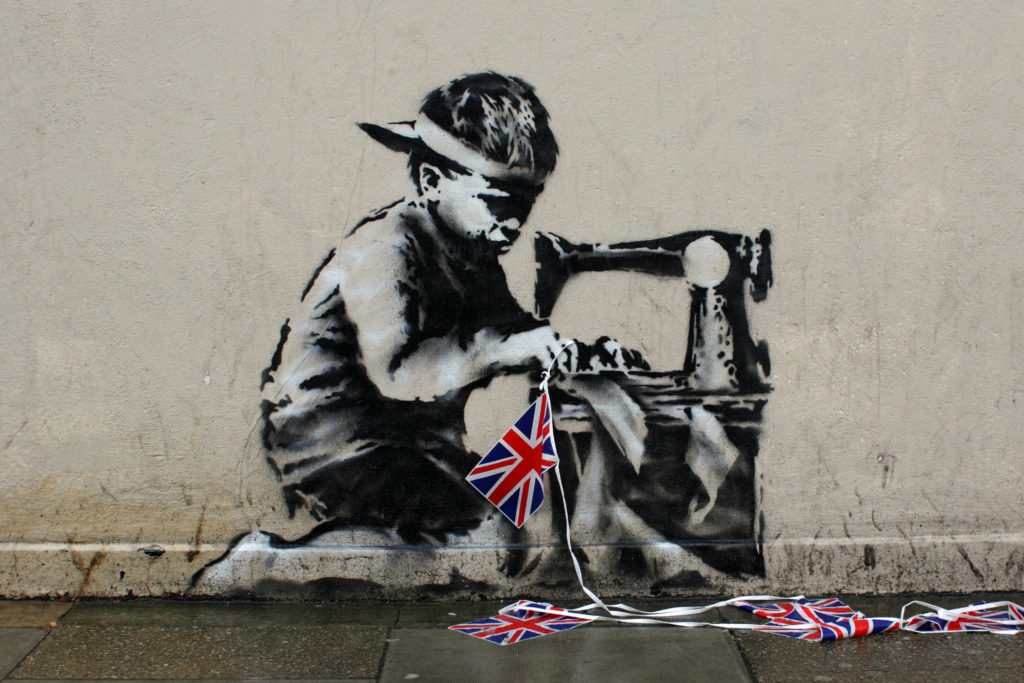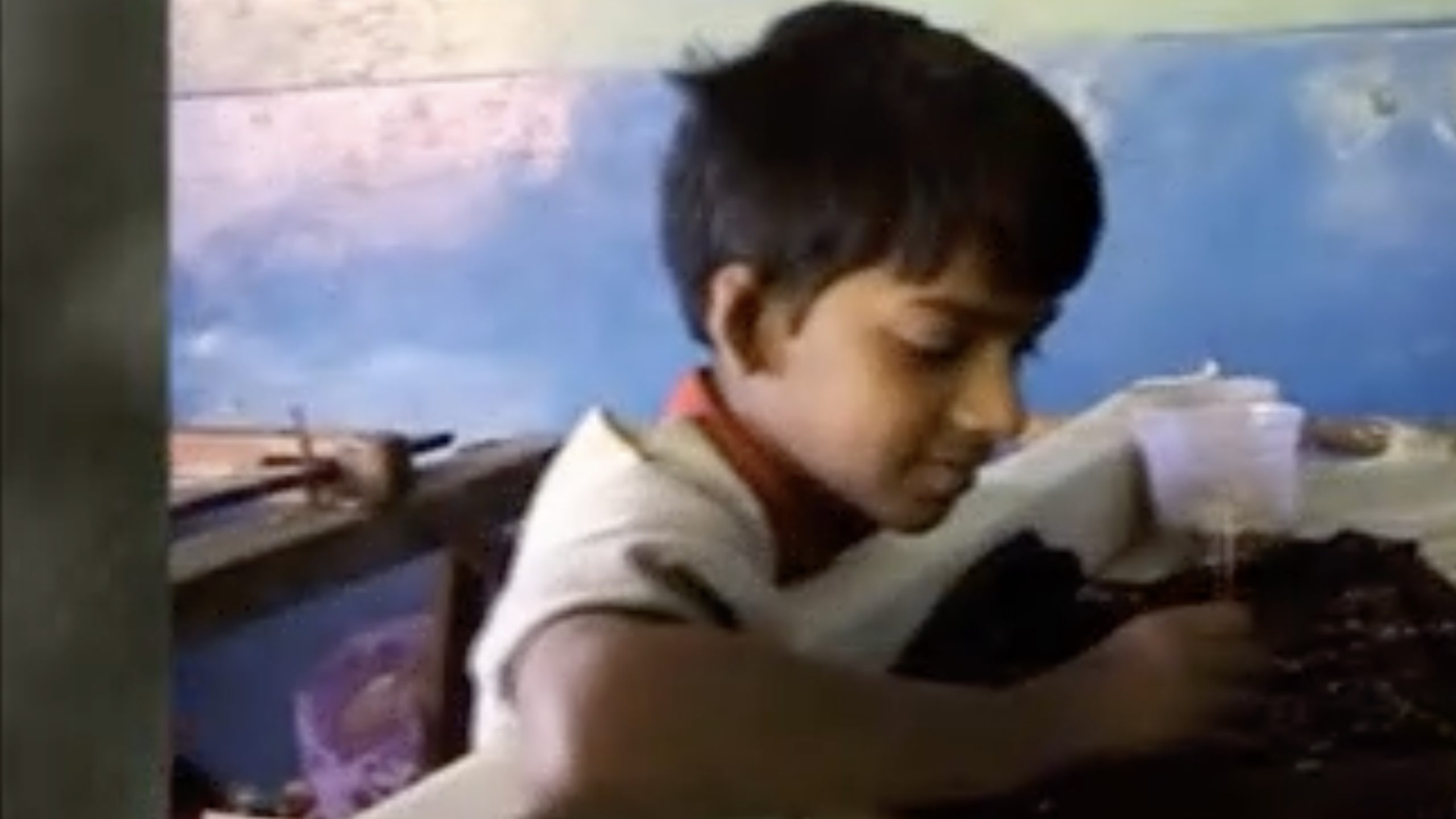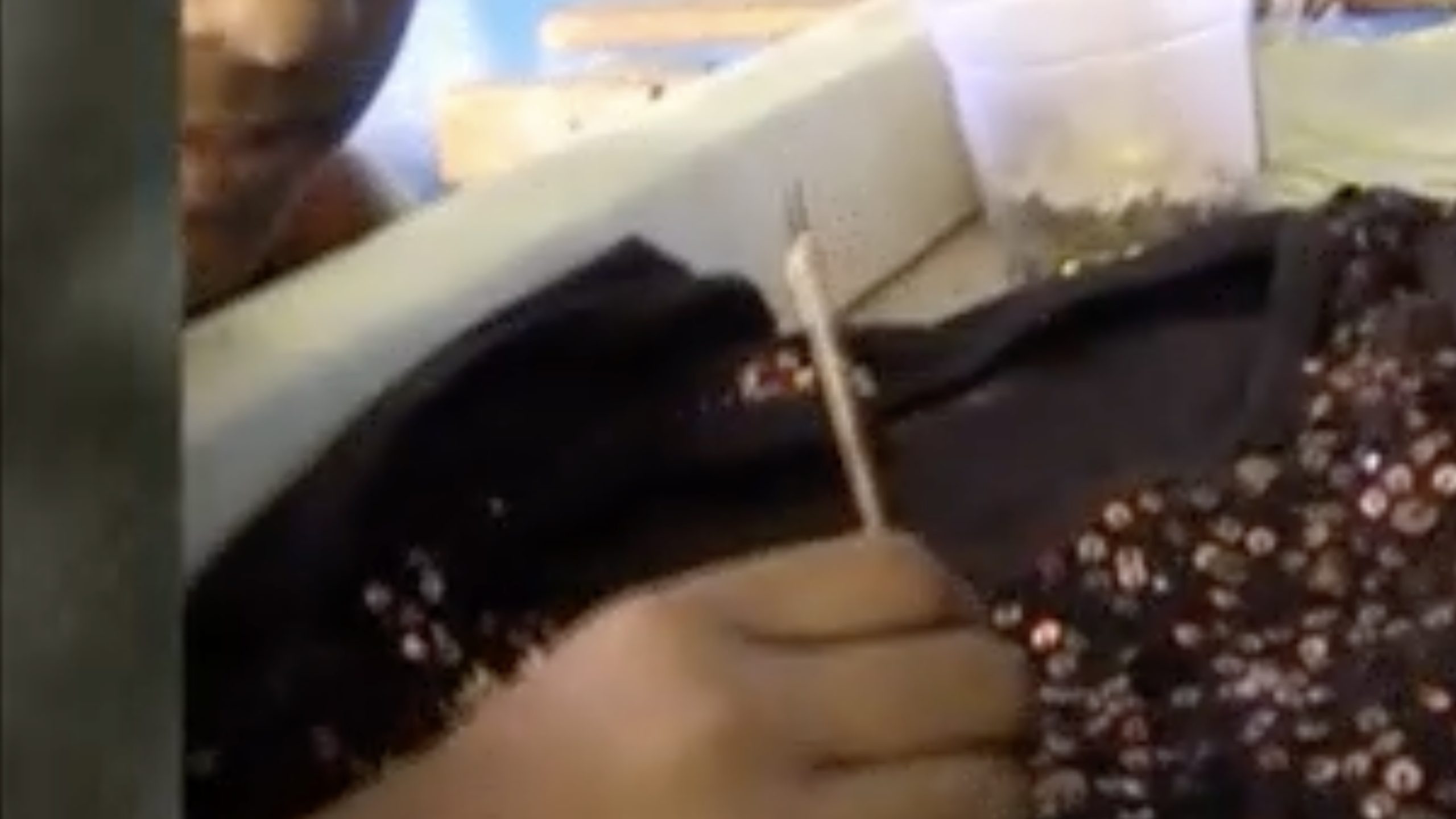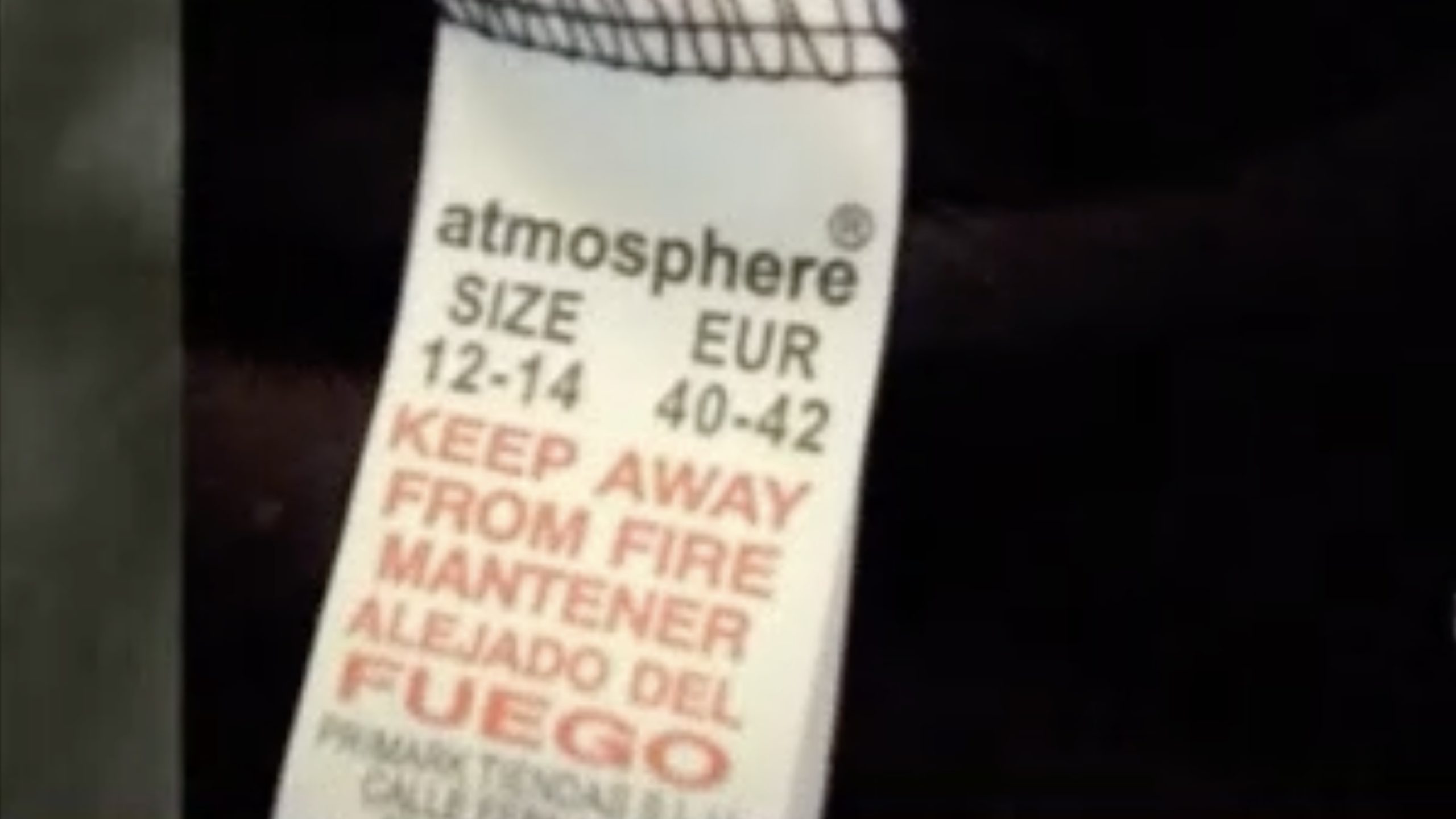
followthethings.com
Grocery
“The Fruits Of Our Labour: An Avocado’s Story“
A dissertation by Freddie Abrahams, submitted as part of their BA Geography degree at the University of Birmingham, UK.
Sample pages from Introduction, Methodology & Findings in slideshow above. Click them to read the dissertaion.
Undergraduate student Freddie Abrahams is shocked to discover that the Carmel-branded, ‘Produce of Israel’ avocados he eats may be grown on illegally seized Palestinian land. There’s a campaign in the UK to boycott these fruits. So he contacts Agrexco, the Israeli company that supplies them, and asks if it’s possible to find out for himself. He travels to Israel and ends up on kibbutz farms. They’re not on Palestinian land. And they’re not farmed by Palestinian people. The people he meets are migrant workers from Ethiopia, Thailand and other countries. He’s baffled. The boycott protestors are so angry. They say that all Israeli avocados should be boycotted. But the Agrexco managers he’s met have helped him so much with his research. They have been so open. He hasn’t seen any avocados being grown on Palestinian land. But Agrexco wouldn’t help him to see that, would they? His research does throw some doubt on facts of the boycott. So what’s his dissertation about? Following acovados? And/or the politics of knowledge in following avocados. What research are thing-followers allowed to do? What access can they gain to what spaces? Who gives permission? Who shapes what they learn to see? Freddie’s research was unusually easy to do.
Dissertation reference: Freddie Abrahams (2007) The Fruits Of Our Labour: An Avocado’s Story. BA Geography Dissertation: University of Birmingham, UK (followthethings.com/the-fruits-of-our-labour-an-avocados-story.shtml last accessed <insert date here>)
Page reference: Freddie Abrahams (2011) The Fruits Of Our Labour: An Avocado’s Story. followthethings.com/the-fruits-of-our-labour-an-avocados-story.shtml (last accessed <insert date here>)
Estimated reading time: 60 minutes.
Continue reading The Fruits Of Our Labour: An Avocado’s Story ![]()

